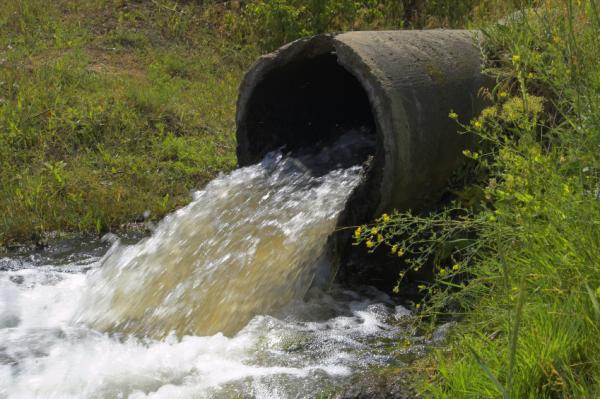By Ganesan Subramanian, [email protected]
Typically, most development the world over is mere replication of the best practices of the western world, as it saves the risks and learning curves of reinventing the wheel. No wonder Africa merely copies the west in almost all the realms. Some of the examples are IT practices, construction practices, mining practices and oil drilling practices.
However, sometimes this may not be the best strategy. Building sewerage (drainage, usually underground) is a case in point.
In the west, sewage from toilets, kitchens, baths, wash basins, washing machines, etc are collected in each building, passed through sewerage (typically underground drainage lines) and taken to a corner of the city where a centralized ‘Sewage Treatment Plant’ (STP) treats it. This treated sewage is then discharged, to the sea or other water bodies. Most modern cities and towns were built many decades if not centuries back, and so such sewerage systems and STPs were also built long back.
In the old days, waste water was not considered a reusable resource, and so the society was only interested discharging sewage, either to the sea or other water bodies, or out in the open. STP technologies were so primitive (most technologies still are) that the STP areas used to stink, and so they built STPs in a God-forsaken corner of the city/ town where nobody lived anywhere nearby.
These STPs were huge in size, and consequently, had to be built to be adequate for the next 25 or more years, thus building over-capacity, which brings down the efficiency of the electrical systems, increasing the power consumption. Clearing sewer blockages and replacing old pipes becomes a huge mess in the centre of cities with such systems, and is costly as well.
They also use chemicals, further contaminating the sludge, which is difficult to dispose anyway. Remember, when you use sludge as landfill, you’re removing pollutants from sewage and depositing elsewhere, and the pollutants leach back to pollute the ground water. And the aquifers and ground water in these areas gets heavily polluted. Apart from foul odour, these STPs breed insects and mosquitoes, leading to diseases like malaria, typhoid, cholera, jaundice, etc.
They built sewer lines running across the city/ town to the STP location. While the pipe sizes in the farthest locations were small, the pipe sizes became larger as they got nearer to the STP because the volume of sewage they carry increases. Close to the STP, the pipe sizes became very large. The typical cost of sewer lines was 6-8 times the cost of STP.
But things have changed since then. Clean water is becoming scarce. So, communities have started looking at ways of re-using treated sewage. We may soon have to adopt zero discharge concepts even in respect of sewage. Many countries have started legislating that industry shall not draw ground water, but have to treat sewage and re-use.
So, a few new modern technologies are coming up which can treat sewage to high levels of purity, fit for re-use for not only gardening but even for toilet flush, car wash, industry including building construction, and even drinking (like NEWater in Singapore).
Some of these technologies need much smaller footprint, and don’t need buffer zones separating the STP from areas of human habitation. Fewer of these can be located in odd-shaped spaces or even in basements, densely populated residential and commercial areas of the city/ town, which reduce the cost of sewer lines substantially. Being closer to the points of sewage generation, low cost small sized treated water pipelines can be taken to the sewage source for re-use in the same community. And aquifers are saved, saving the ground water in these areas substantially for future generations. They can digest sludge completely, thus avoiding the hassles and cost of sludge handling. They don’t breed insects and mosquitoes. This is the modern ‘De-Centralized STP’ concept.
STP technologies which are modular are most appropriate for De-Centralized STPs, and they can be designed for just the next 1 or 2 years, since you can always add modules and add to the capacity. Since these are right-sized, they are efficient, reduceing the power consumption.
But since developed countries have already put in place Centralized STPs (paradoxically named so, though their locations are in remote corners of the cities) with corresponding sewers at high costs, they are not in a position to easily change over to the new technologies. So, developed countries are stuck with old STP technologies.
But there is no reason why developing countries (esp African countries which have practically no STP infrastructure, esp almost no sewers) should copy the developed countries, installing ‘unaffordably high cost sewers centric’ antiquated technology based Centralized STPs, which also waste the water that is treated at high cost.
Moreover, in most African countries, substantial quantities of wastewater from many commercial establishments like laundries, hotels and hospitals, freely mix with sewage. Since this will contain many chemicals, including carcinogens, and heavy metals, this is difficult to treat even in centralized STP using biological techniques. They need non-biological techniques/ ETPs (Effluent Treatment Plants) to treat commercial effluents.
The larger the sewers networks, the more risky they are to operate, esp. in developing countries which deploy only manual sewer cleaning processes.
So, in sum, African countries should ideally build de-centralized sewerage and modular STPs catering to upto 5,000 families and re-use the treated water. This strategy will save huge amounts of money by way of investment and O&M costs, conserve water, be more eco-friendly, easier to operate and run, use up less space, cause much less diseases and pollution, and will be the ideal way forward, esp. for developing world like Africa.



